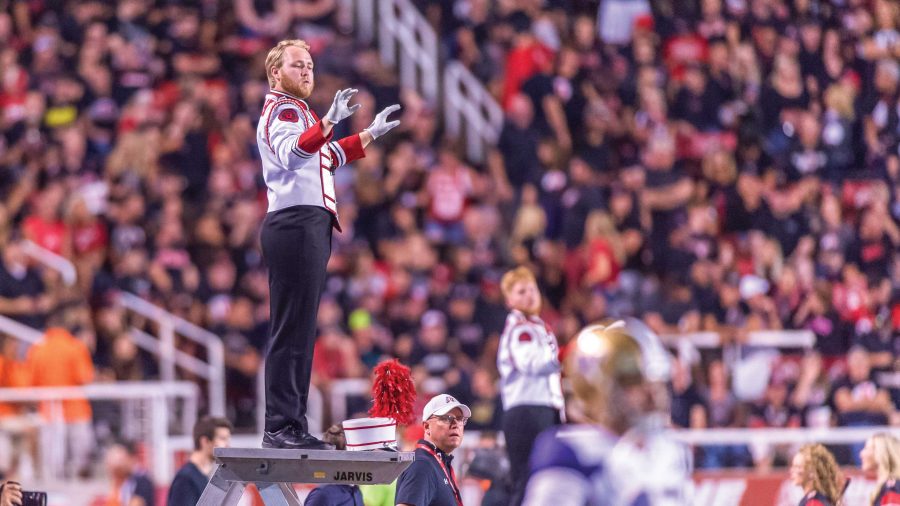Marching bands, for as long as college sports have existed, have been centerpieces for the entertainment surrounding the game and pivotal to providing that gameday atmosphere that we all know and love. It’s hard to imagine a college gameday without hearing the rumble of snare drums, the shining of the sousaphones and the screams of the trumpets.
While it may appear easy, the marching band’s final product — the halftime show, pregame show and stand tunes — are the product of thousands of hours of work and preparation and only a very small fraction of that work is seen on the field or in the stands during a game.
The Pride of Utah, the University of Utah’s premier marching ensemble, has been a staple of marching music in the state of Utah since its foundation early in the U’s history. Marching ensembles have been prominent in college athletics for such a long time and have such a storied history. They were the main source of crowd entertainment before the inception of televised screens and in-game entertainment. Basically, before there was electricity in football stadiums, the noise, hype and music all came from one group — the marching band. The relationship between the marching band and the college football experience has a rich history.
“Getting to run out onto the field in our pregame show and get the crowd excited for Utah football is a once-in-a-lifetime experience,” said junior drum major Jacob Greer. “Being able to generate that gameday atmosphere has been extremely rewarding.”
Greer, along with drum majors Adam Parker, Wyatt Gilles and Max Schultz, leads a group of over 125 students of various backgrounds and majors, from all across the country. The four drum majors, along with Brian Sproul, the director of Athletic Bands, work hand in hand to ensure a positive, fun and focused environment for members to thrive in. “We have fun because we bring that fire every time we play,” said Greer.
The five members of leadership have a lot of work to oversee throughout the course of the season. The band usually performs two shows throughout the season in addition to learning the pregame show. The band learns roughly 20 stand tunes and the three Utah-related songs — “Utah Man,” “U of Utah” and “U-Pep” that are played frequently in the band’s gameday schedule. All of this is in addition to the halftime shows where they spend the majority of their practice time.
The band also gets to travel to select away games with the team. In a reduced size, the band will often represent the U at two away games per year and the bowl game.
The act of marching and playing music is a result of exercise and time spent practicing as well. Players must be able to control their upper bodies while moving their lower bodies to march around the field. The ability to maintain good airflow to instruments and the ability to move around without hearing impurities in the tone — what they call “hearing feet in the sound” — is a result of years of training and practice, something that many members of the band have had since their days in middle school.
If one word had to define the Pride of Utah, it would be “commitment.” The band practices four days out of every week and prepares well in advance of the school year to present a set of shows and tunes that bring the game-day atmosphere that Ute fans have grown to love.


